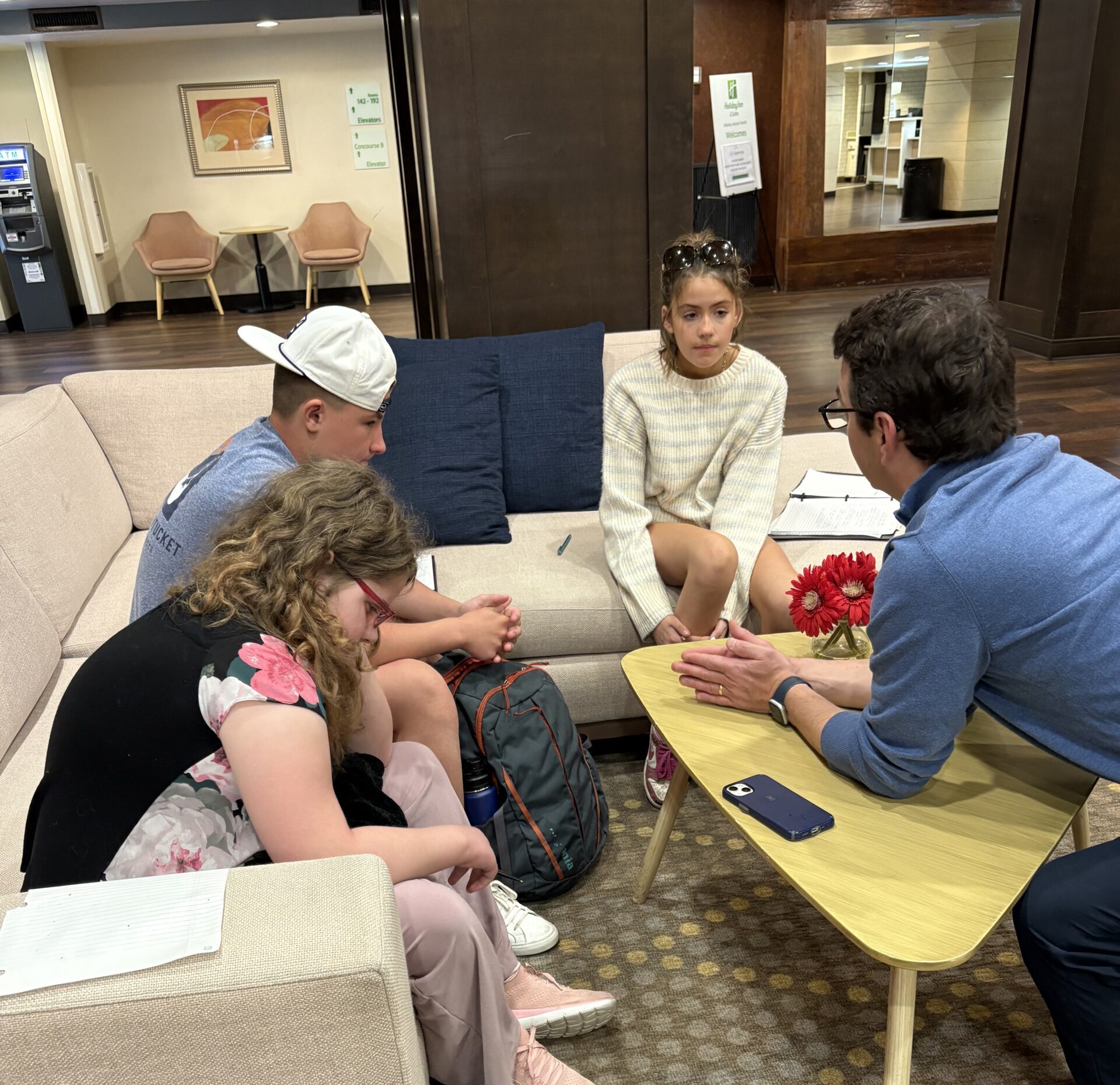
The day began by meeting and discussing our experiences in family groups at the hotel. Questions we reflected on individually and together included…
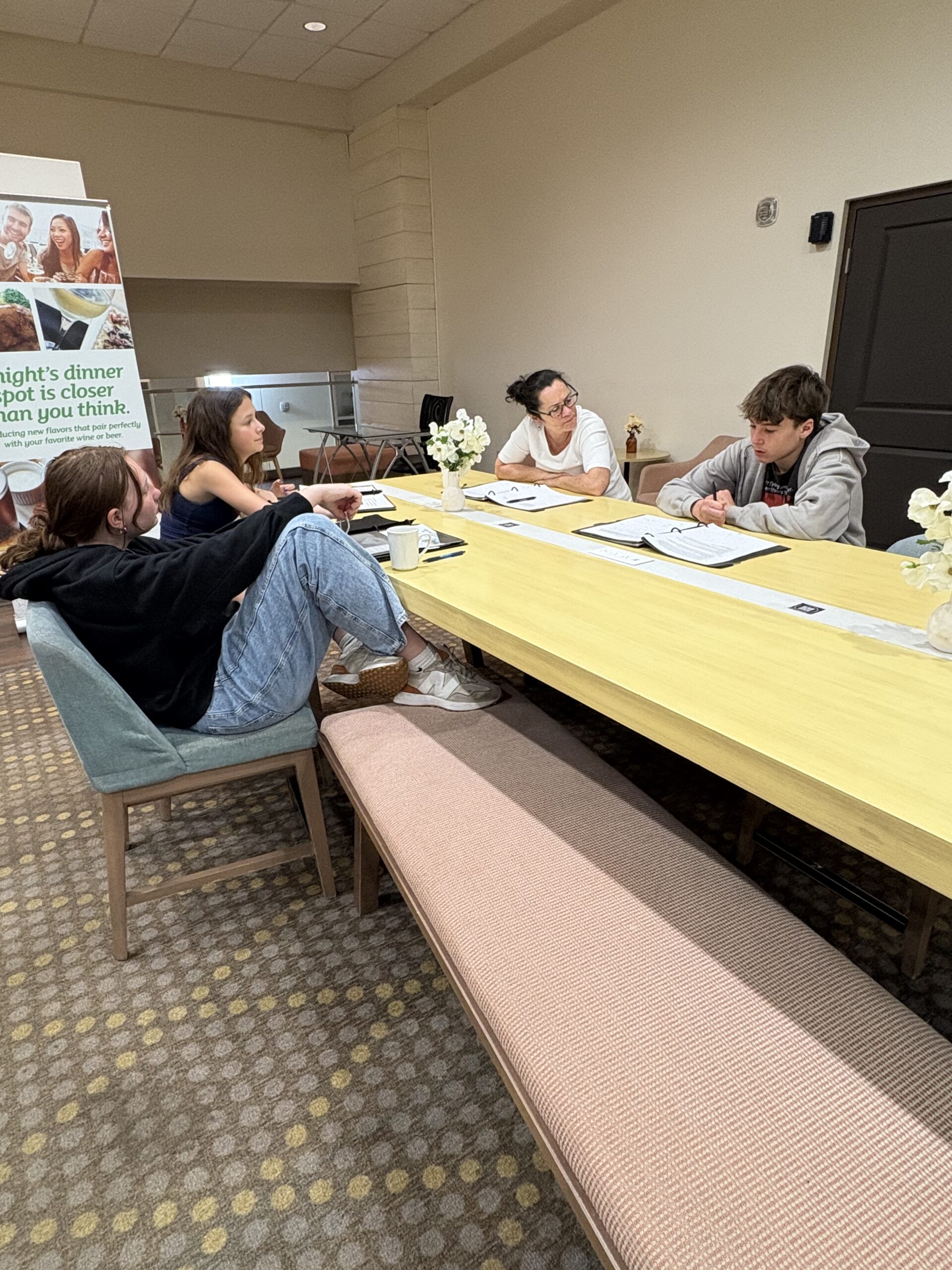
How did the experience of traveling to historically significant locations yesterday impact your understanding of the Civil Rights Movement?
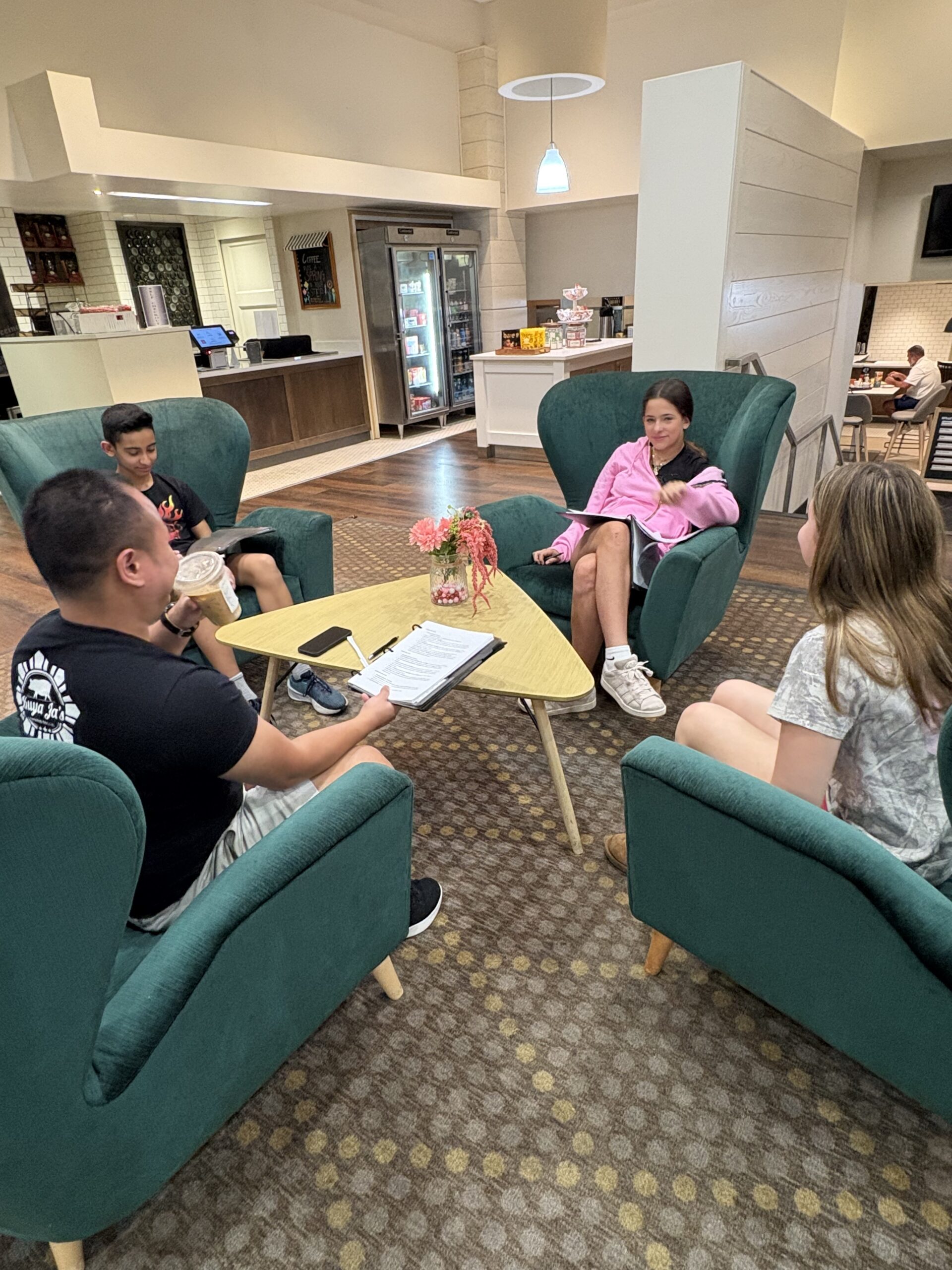
What did you learn about the ongoing legacy of slavery and racial injustice in the United States?
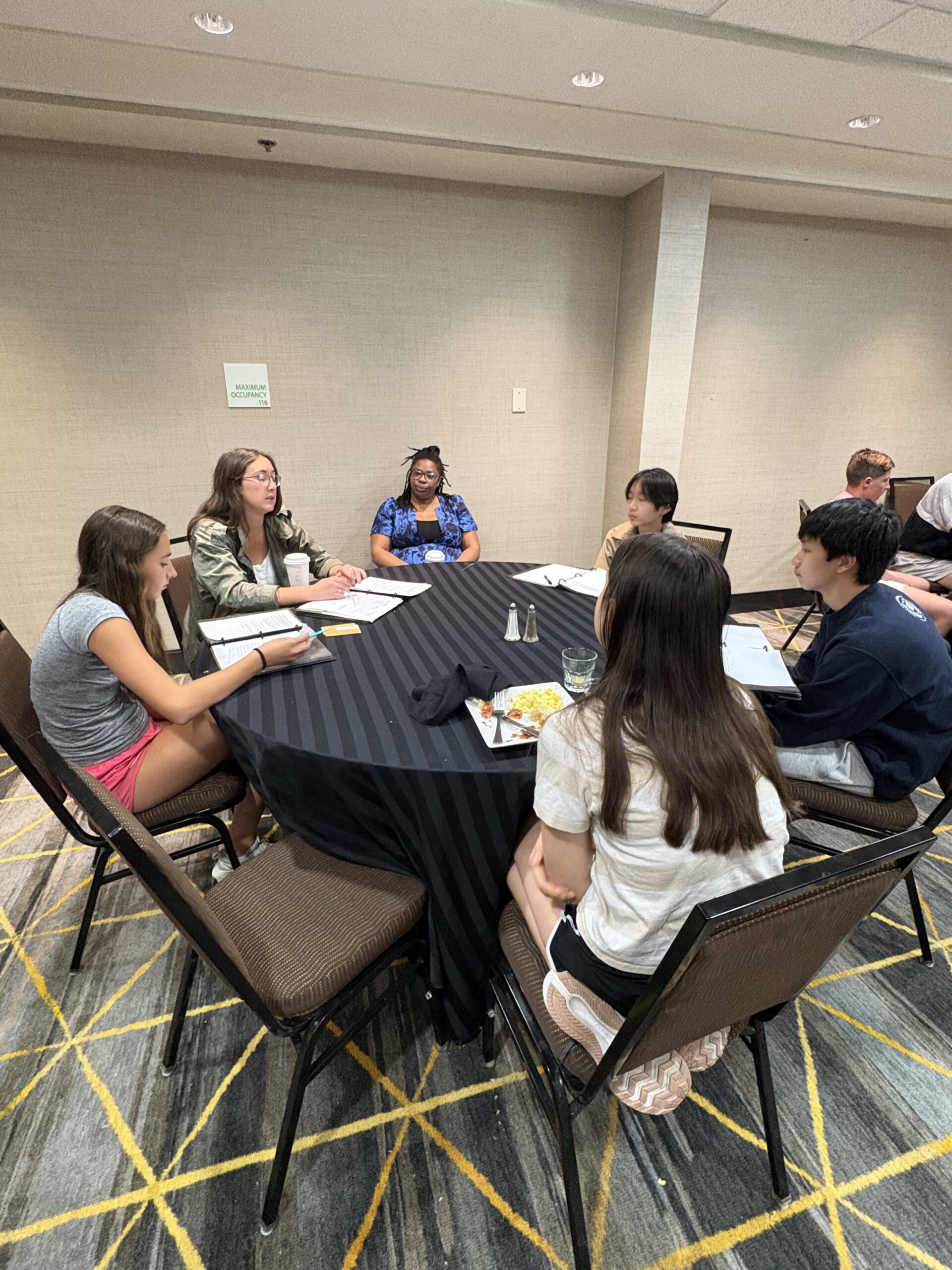
What did you learn about the power of individuals and communities to create change?
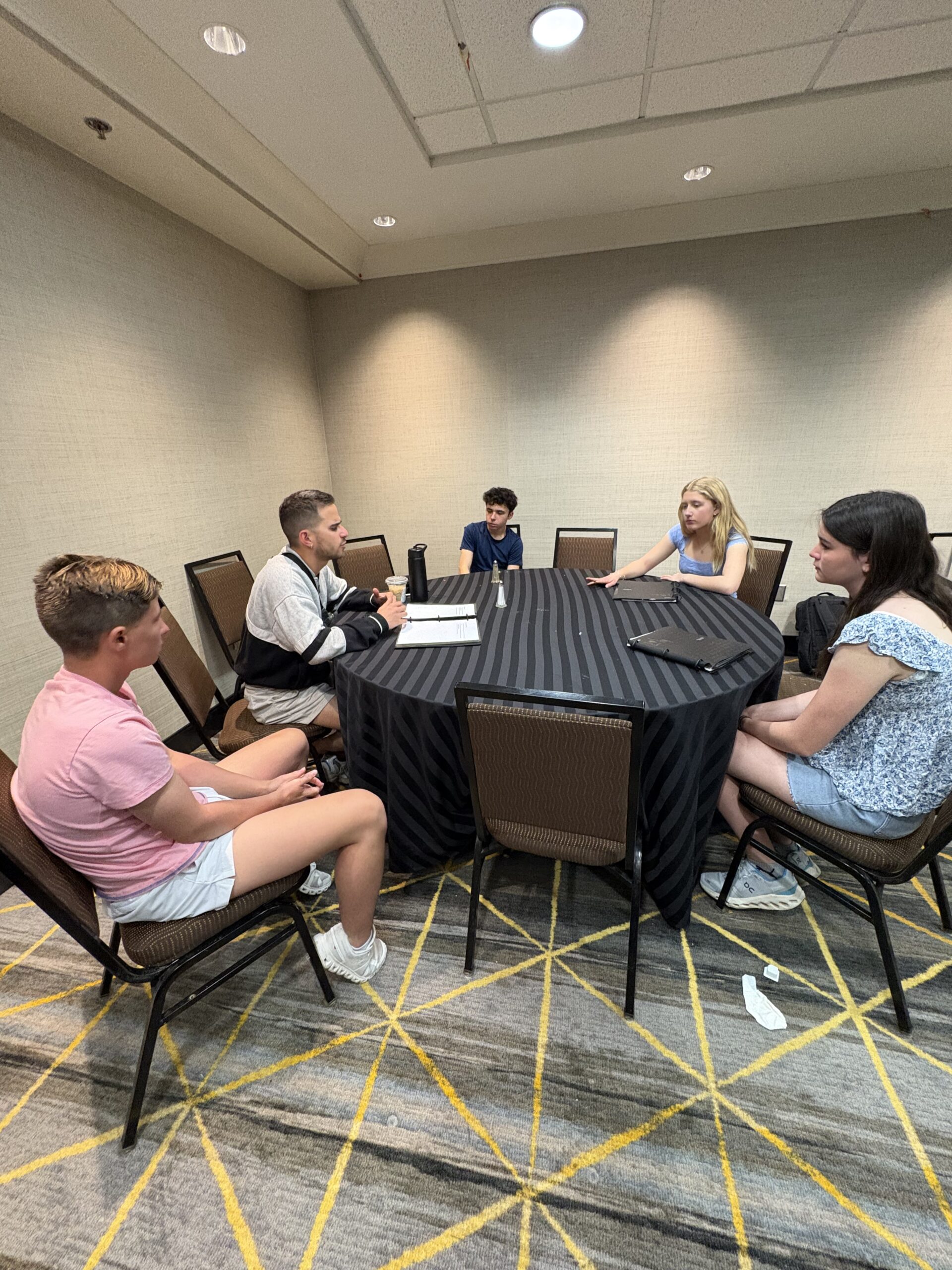
Were there moments that were particularly challenging or emotionally difficult? How did you process those moments?
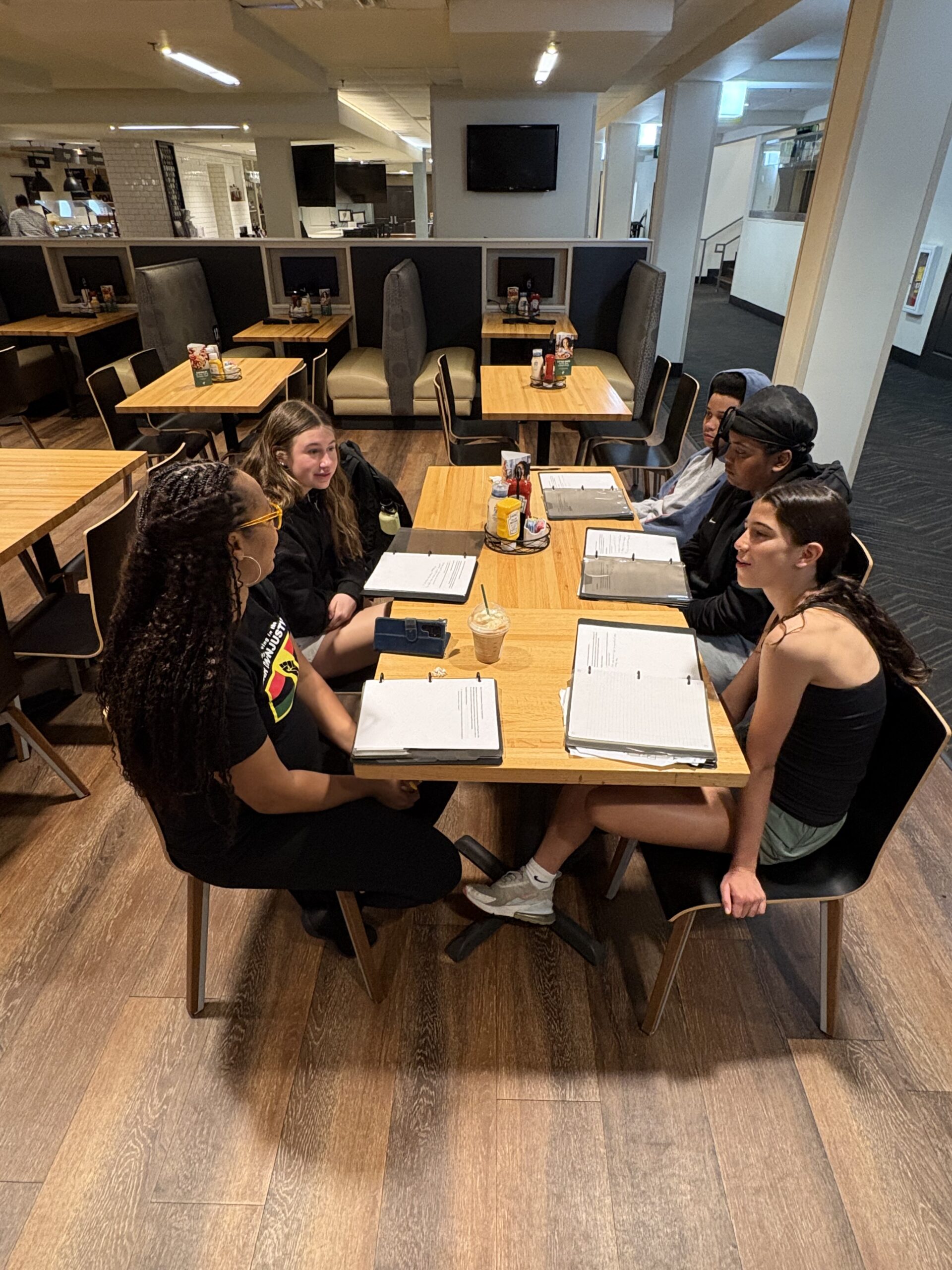
Were there moments of hope, inspiration, or empowerment?

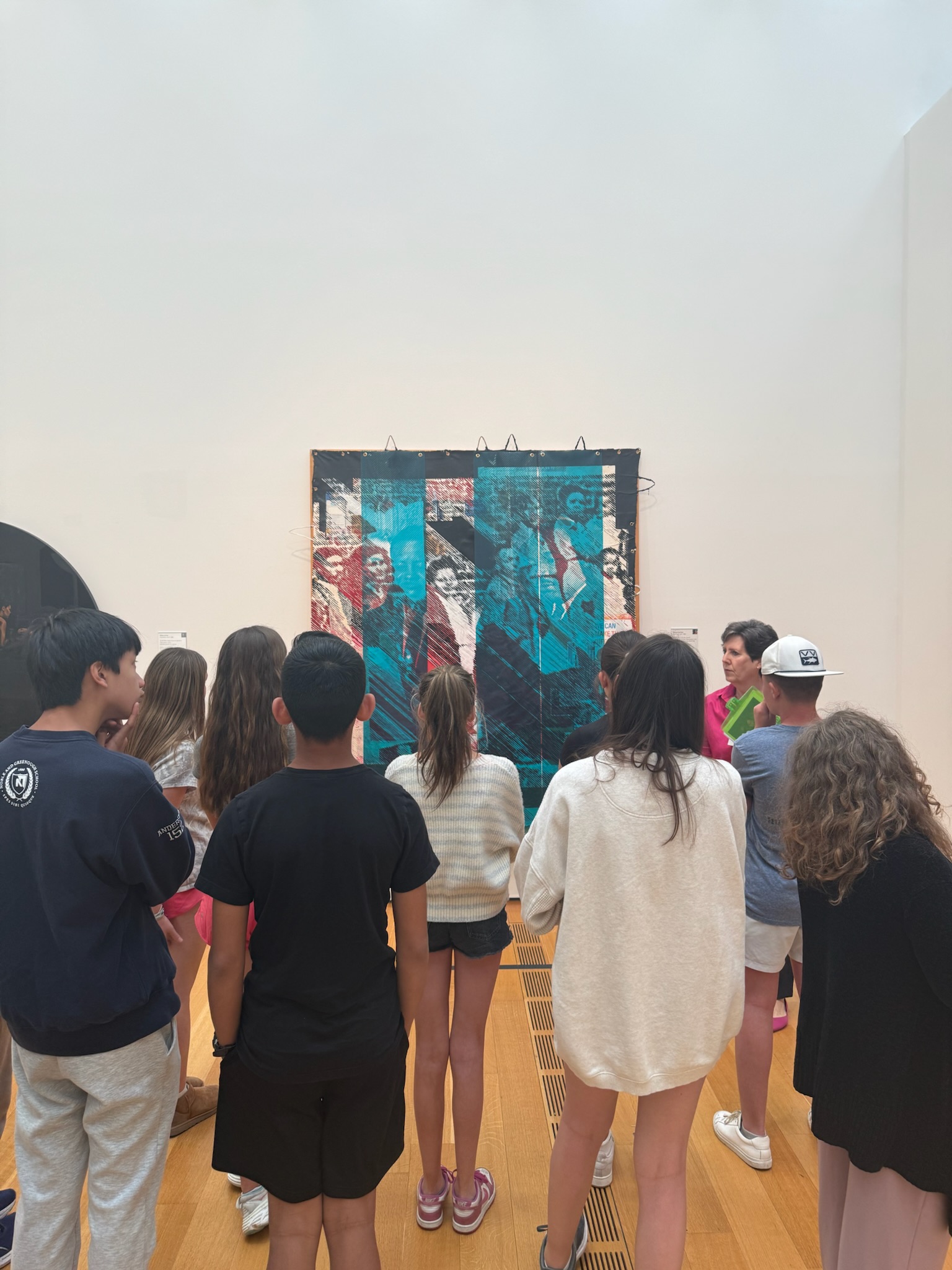
Next, we visited the High Museum of Art in the heart of Atlanta, designed to meet visitors at the intersection of culture and community. There are over 2,000 works of art on display!
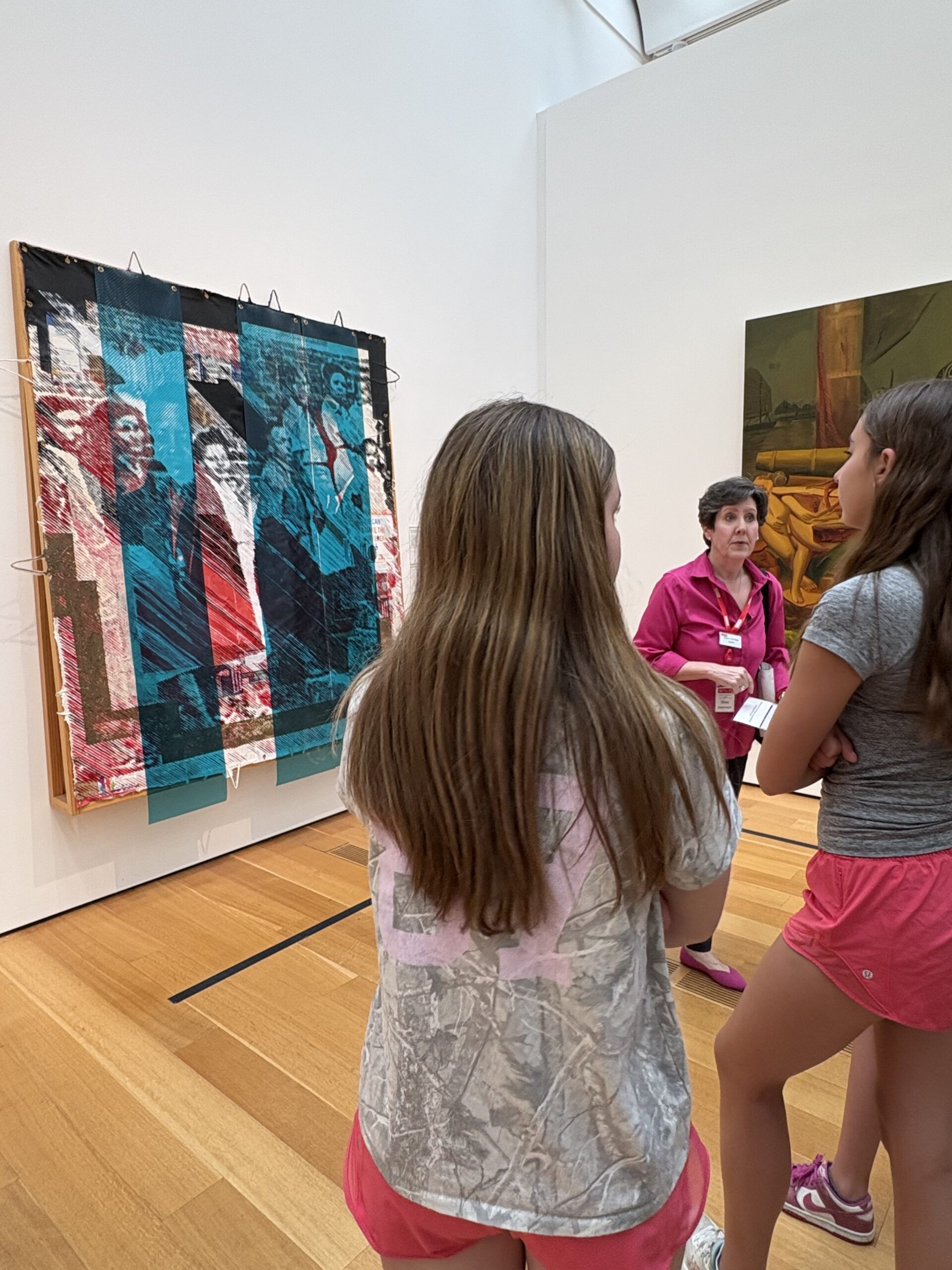
Our guide Shay led us on a tour. This piece titled Is Anybody Gonna Be Saved? (1948 Middle of Voter Registration Line) (1965 Abernathy and King Watch the Signing of the Act) is by the artist Tomashi Jackson and has dirt on it from a home in Ohio along the Underground Railroad.
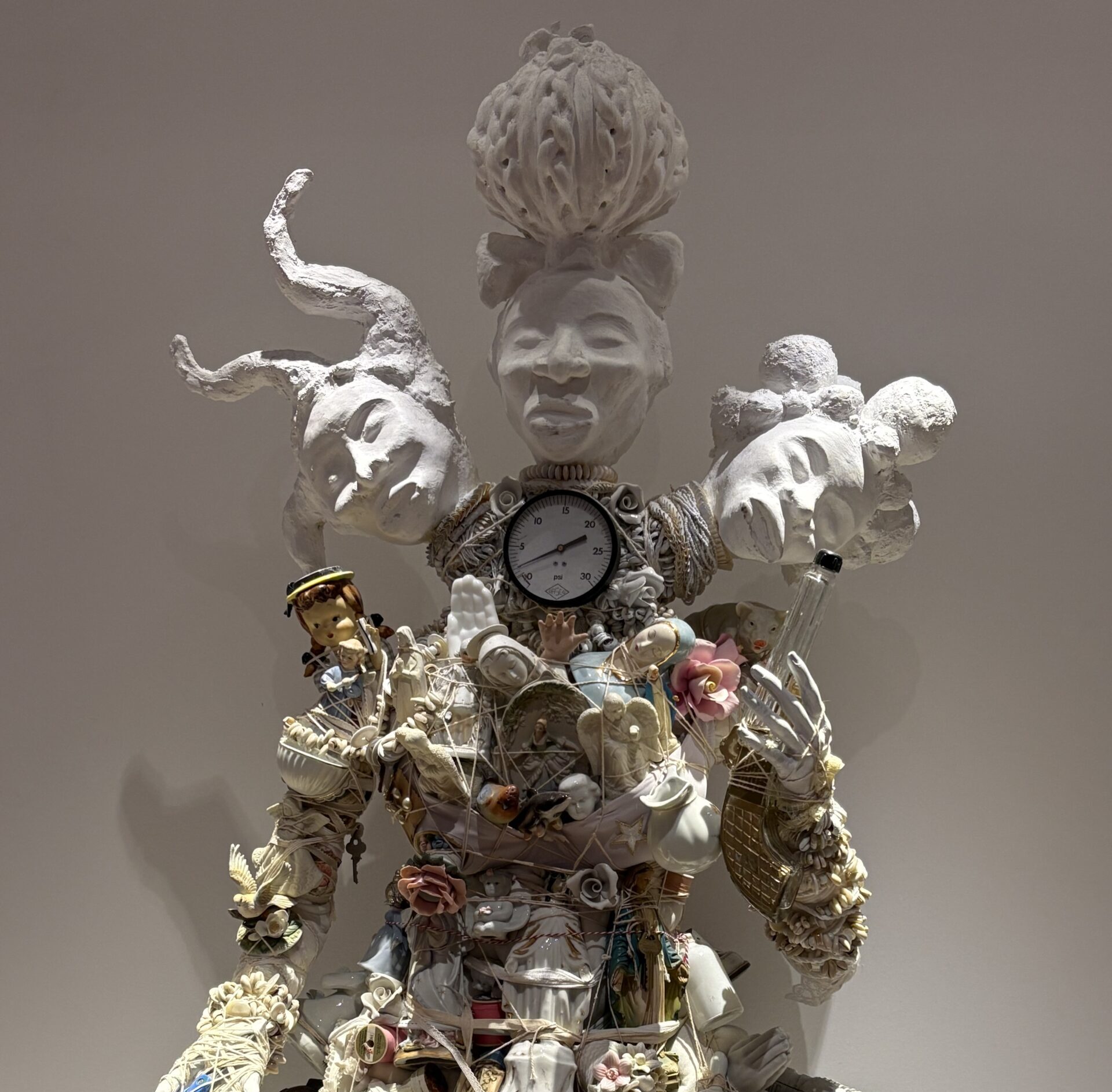
After viewing this piece titled The Three-Headed Girl by Vanessa German the Class of 2025 thought of three objects they would place on their own version and drew it in their reflection notebook.
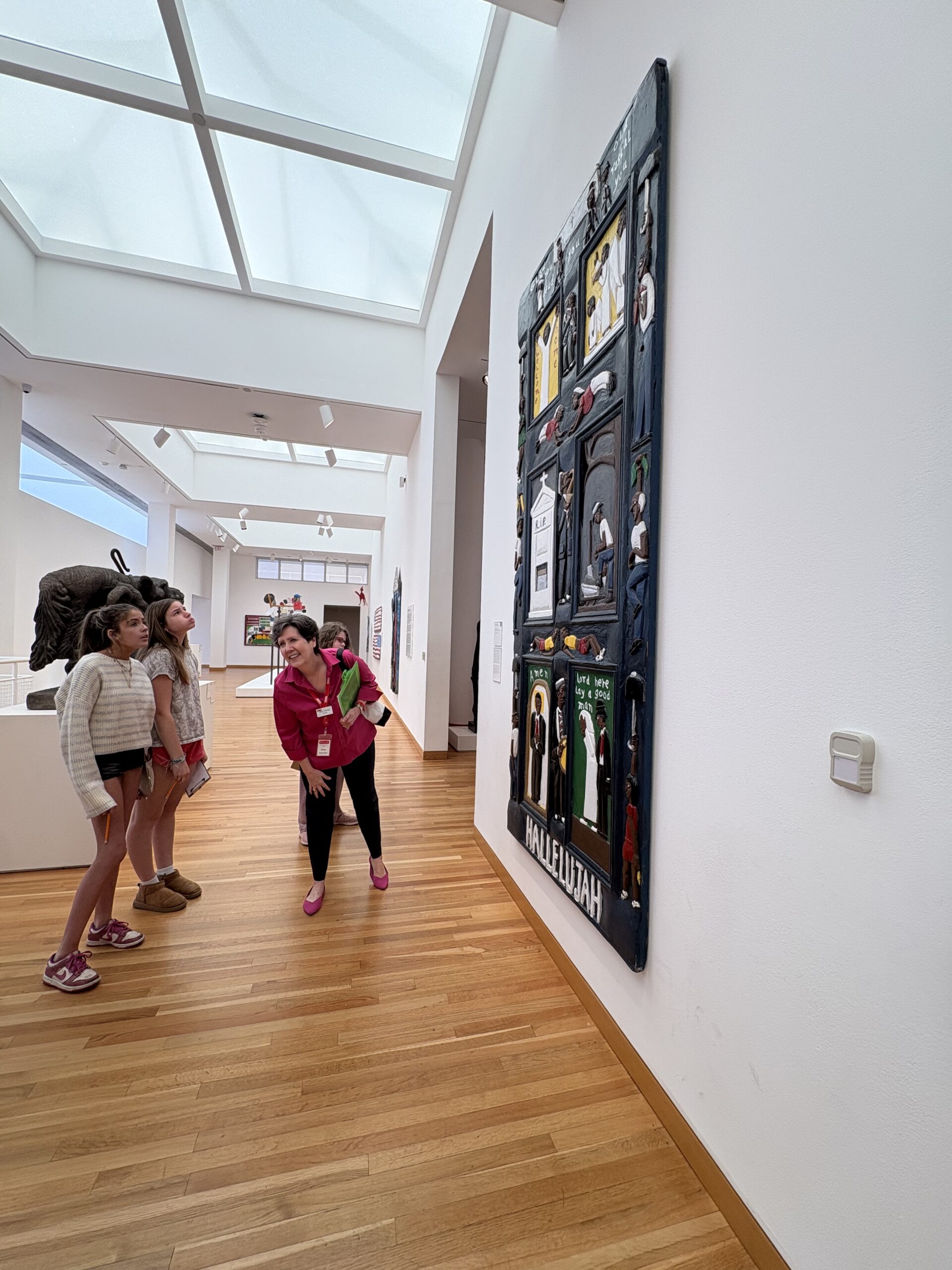
Shay told us this artwork titled Hallelujah Door by the artist Herbert Singleton represents a jazz funeral parade with the song lyrics [I’ll Be Glad When You’re Dead] You Rascal You by Sam Theard displayed at the top.
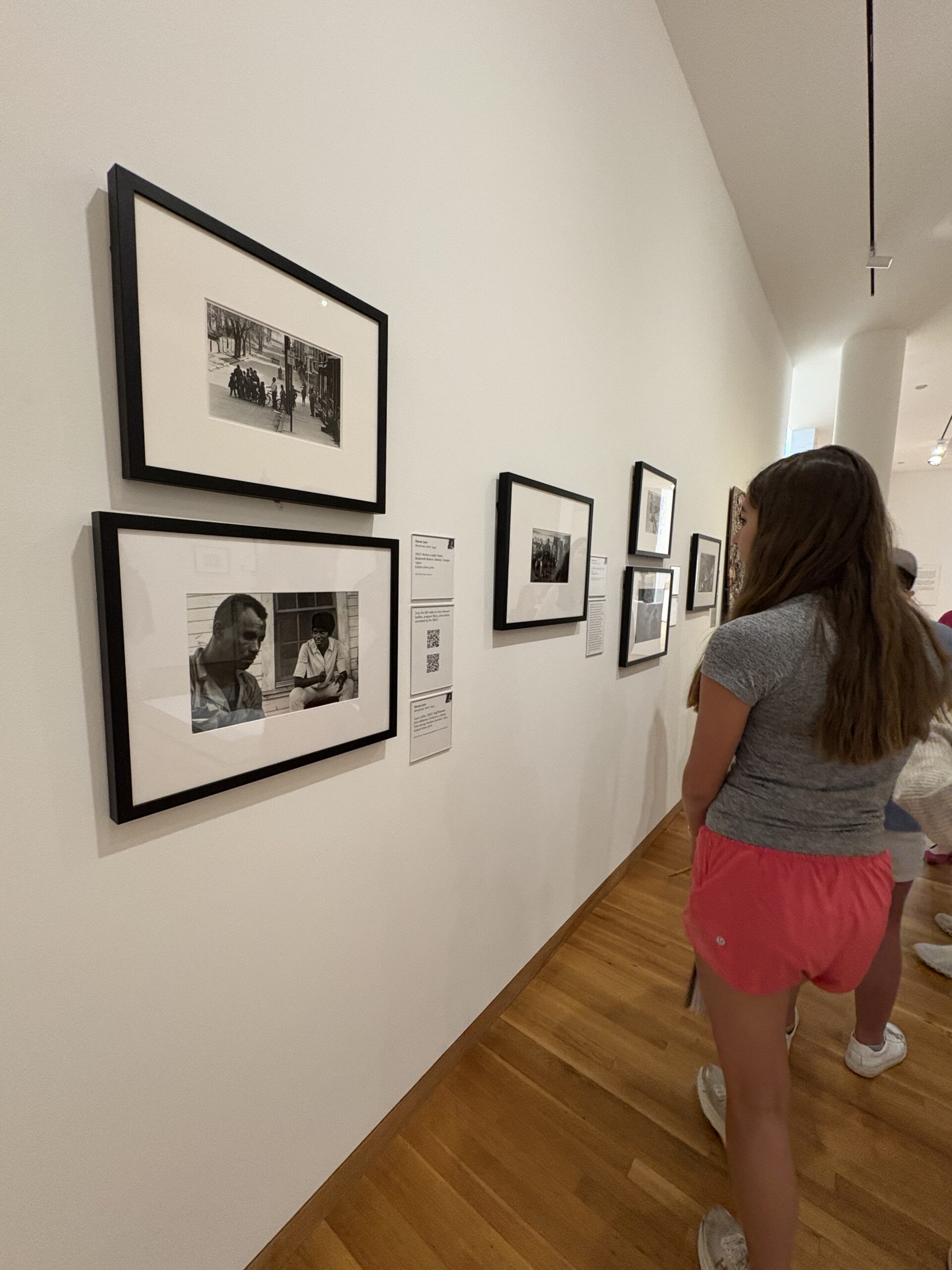
We visited a civil rights photography display.
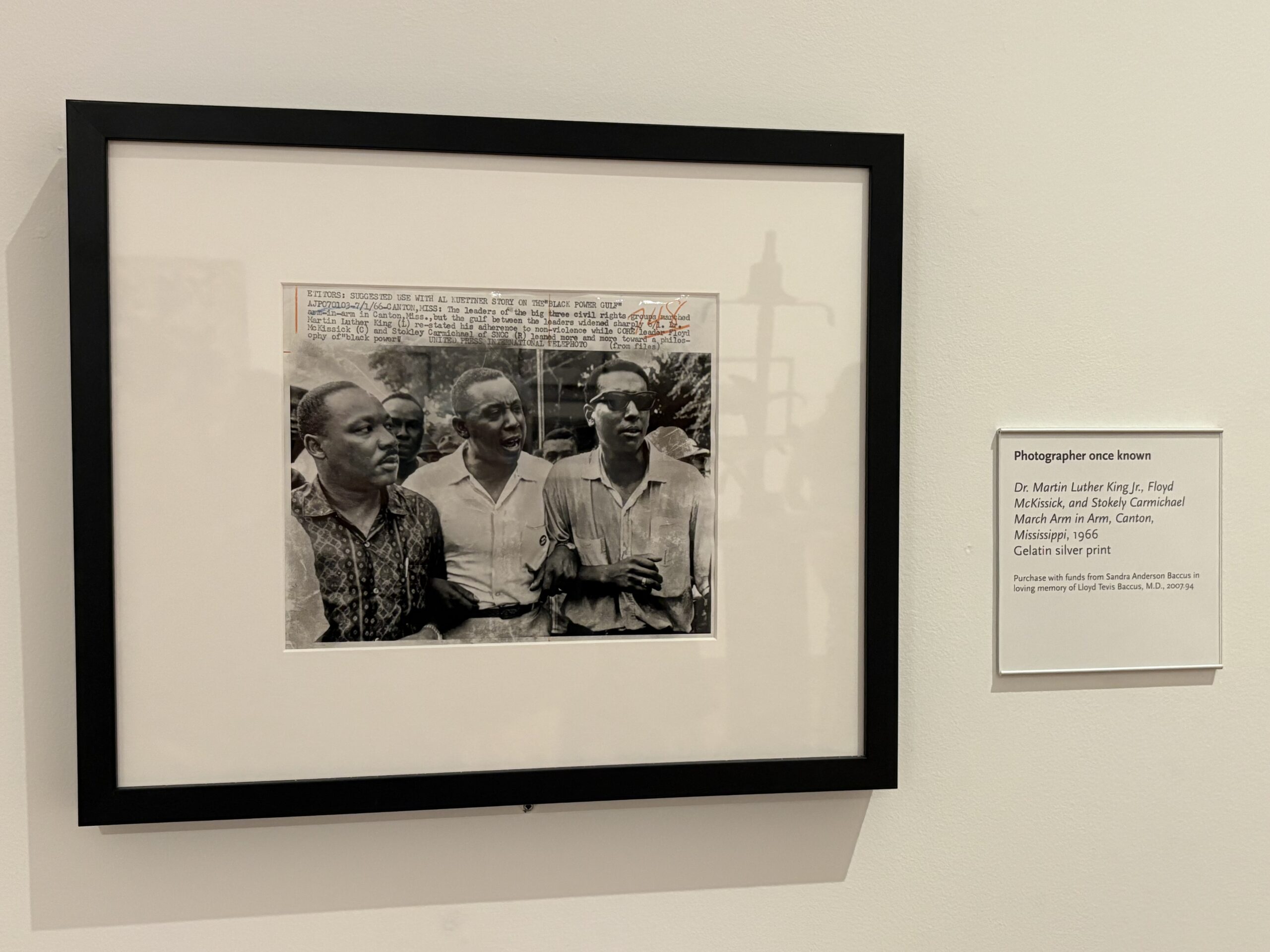
Organizers from the Student Nonviolent Coordinating Committee, a civil rights organization that used nonviolent direct action to protest racism and segregation in the 1960s, made a point to teach photography to document the movement. Our guide reminded us that we while they were documenting the brutalities of the movement, they also captured Black families moments of joy and normalcy.
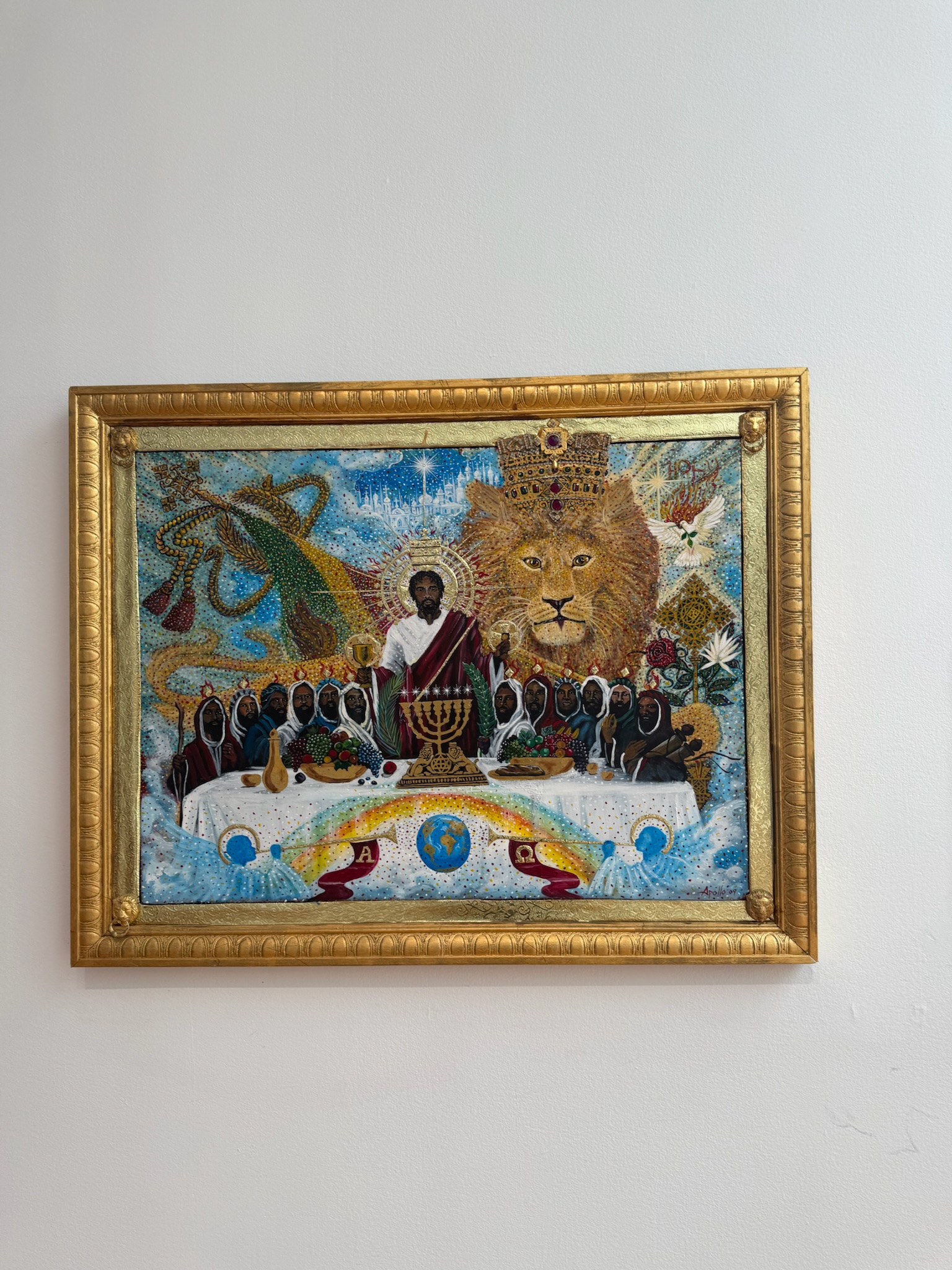
The Last Supper
Archbishop Abuna George and Michael Reeder Apollo
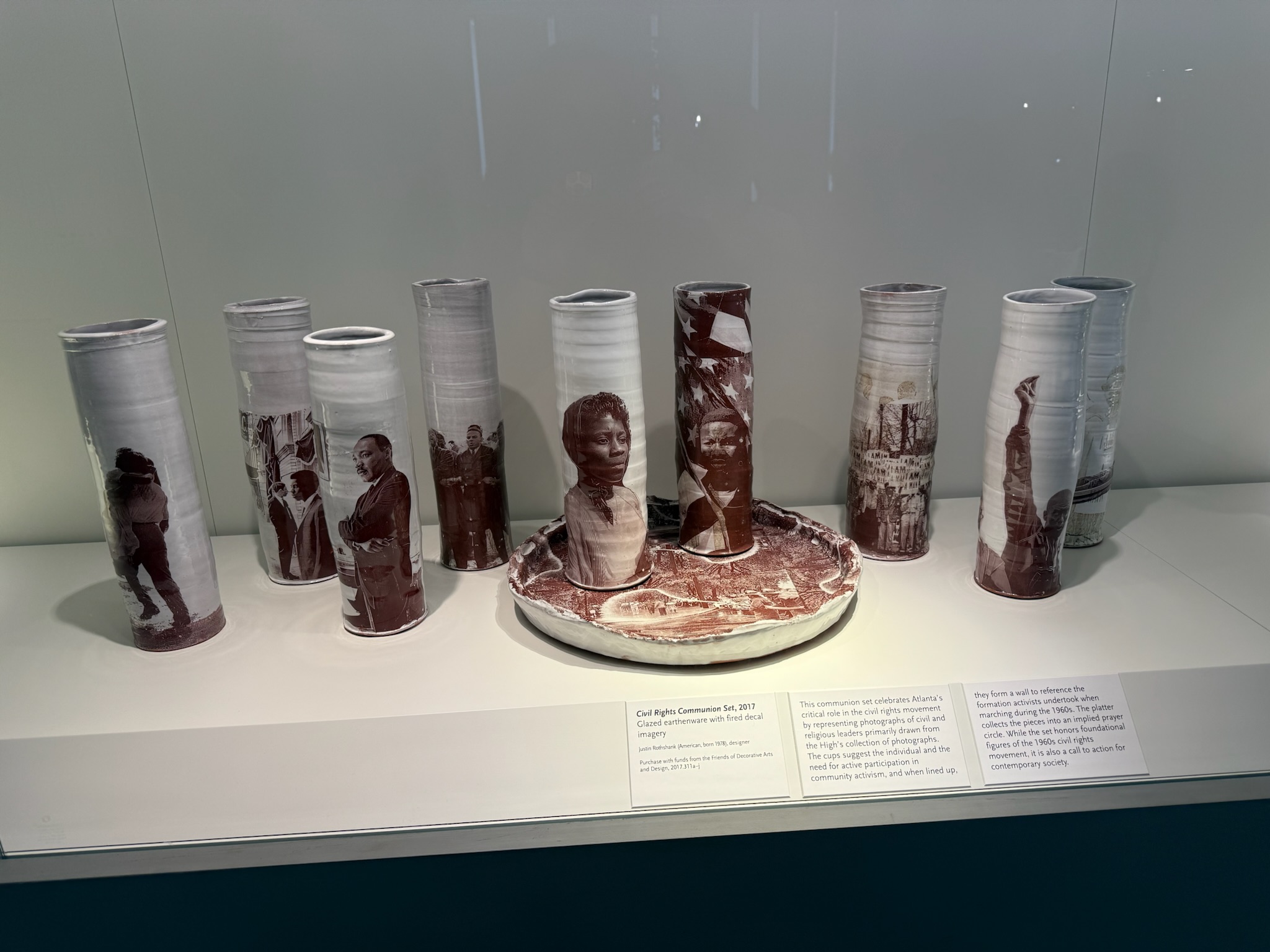
Civil Rights Communion Set
Justin Rothshank
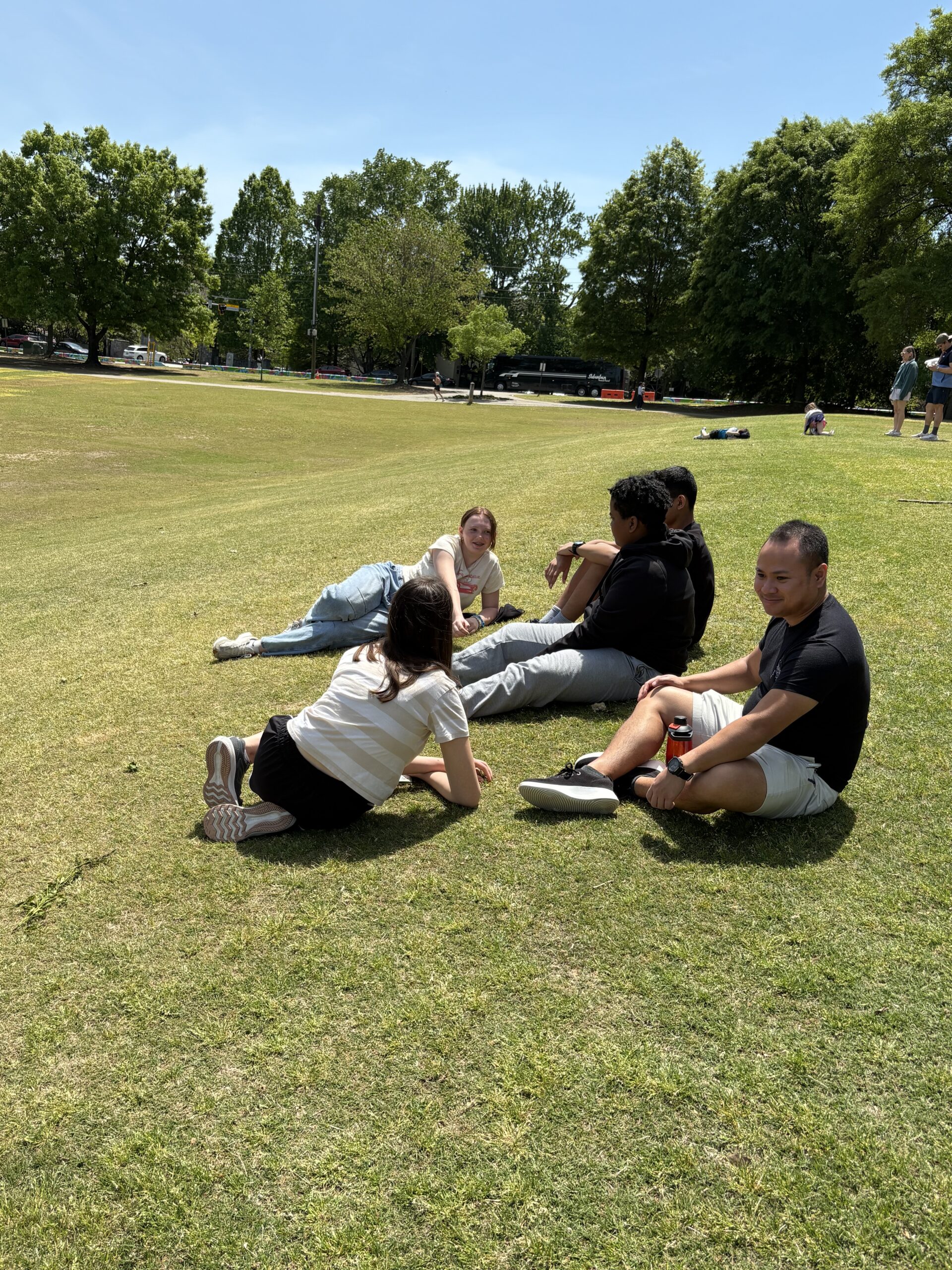
After the museum, we enjoyed some outdoor sunshine at Piedmont Park and explored the area in our family groups.

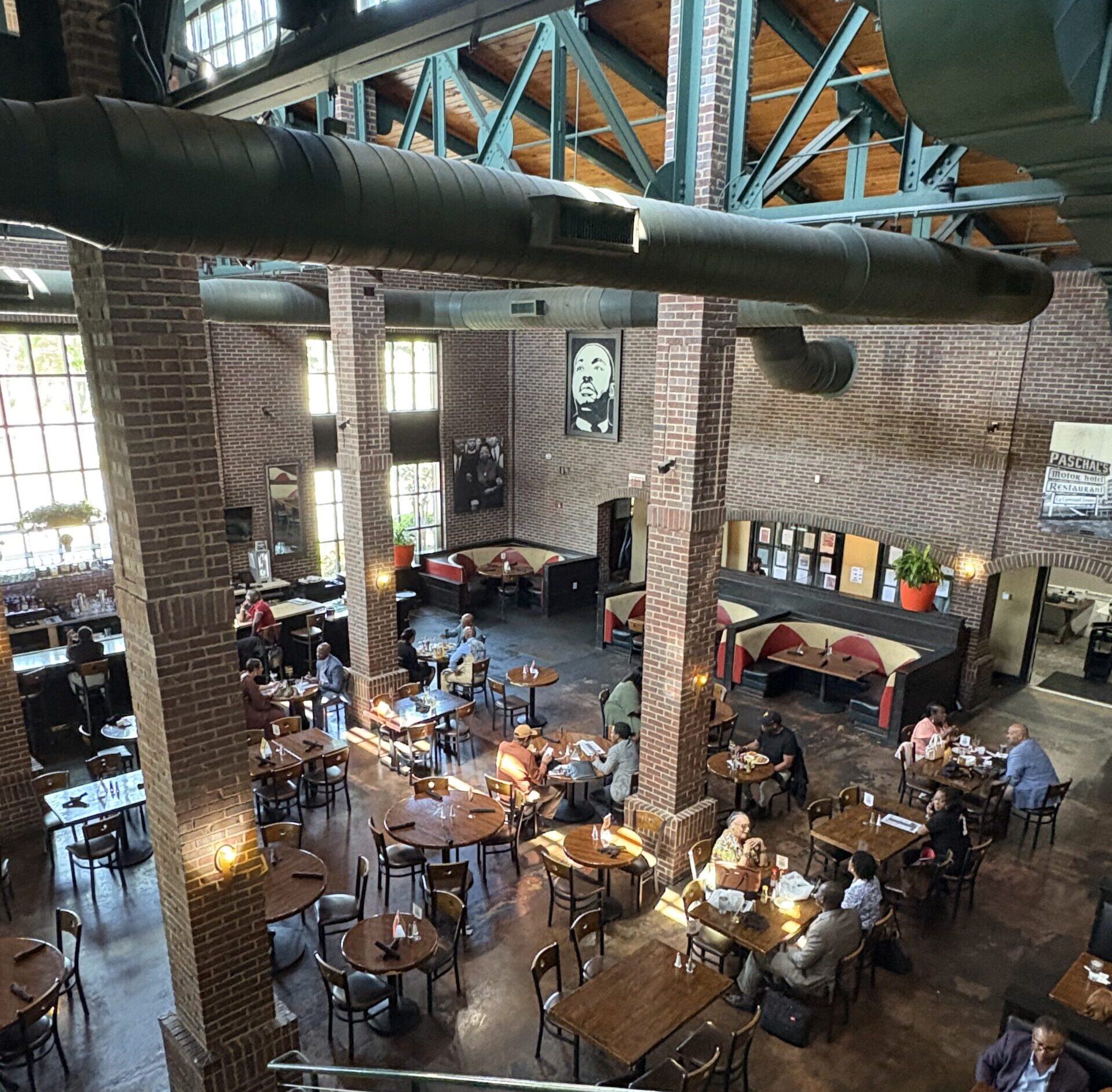
We have been looking forward to having a meal at the historic Paschal’s Restaurant. Paschal’s was a frequent meeting spot during the Civil Rights movement for Dr. King and civil rights leaders.
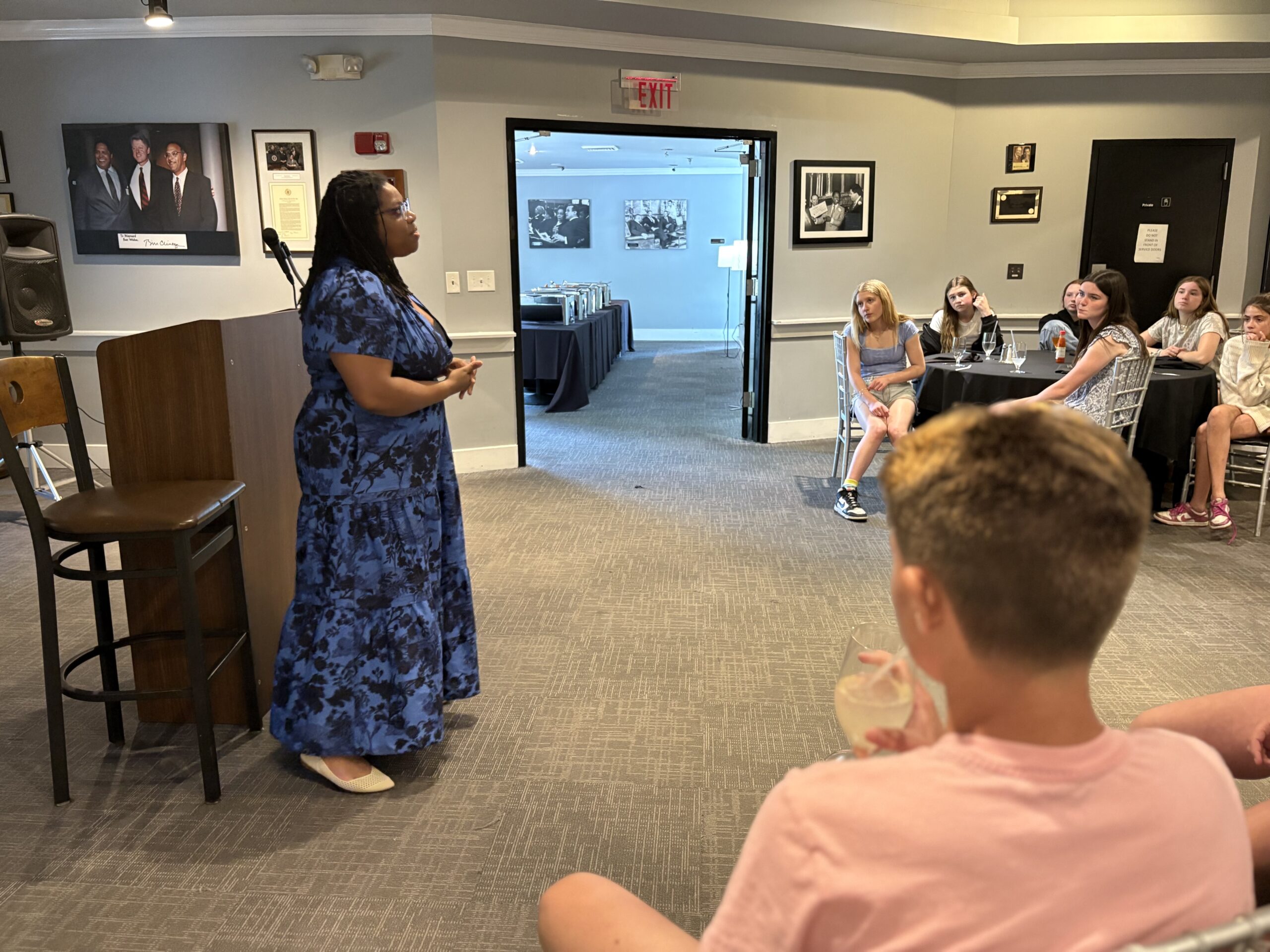
Our time at Paschal’s began with a presentation from CRS Director of Enrollment Management and Financial Aid, Sarah Wooten! Sarah spoke to us about her experience attending Spelman College (spoiler: we got to visit the campus,) a Historically Black College or University (HBCU) and what it meant as a Black student who had gone to a predominantly white high school and then chose to attend a HBCU.
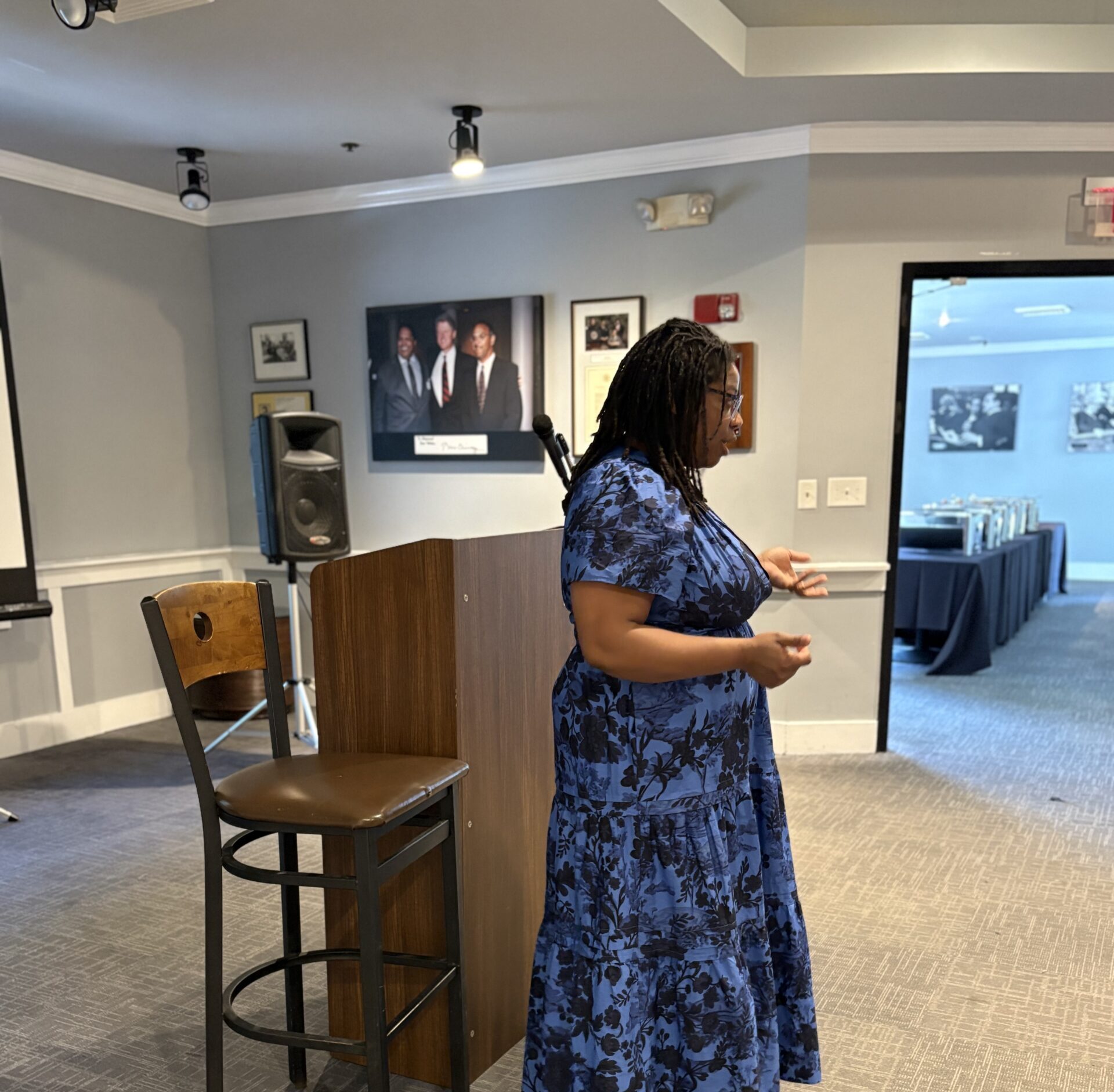
Sarah talked about the experience of Black joy and excellence in her college time and for the first time being surrounded by students and professors who looked like her.
She emphasized to us that though our Civil Rights Trip has taken a close look at the struggle, oppression, and brutality toward Black Americans, her experience at Spelman was a reminder of joy and legacy. The women in her family have long attended Spelman and are called the “golden girls.”
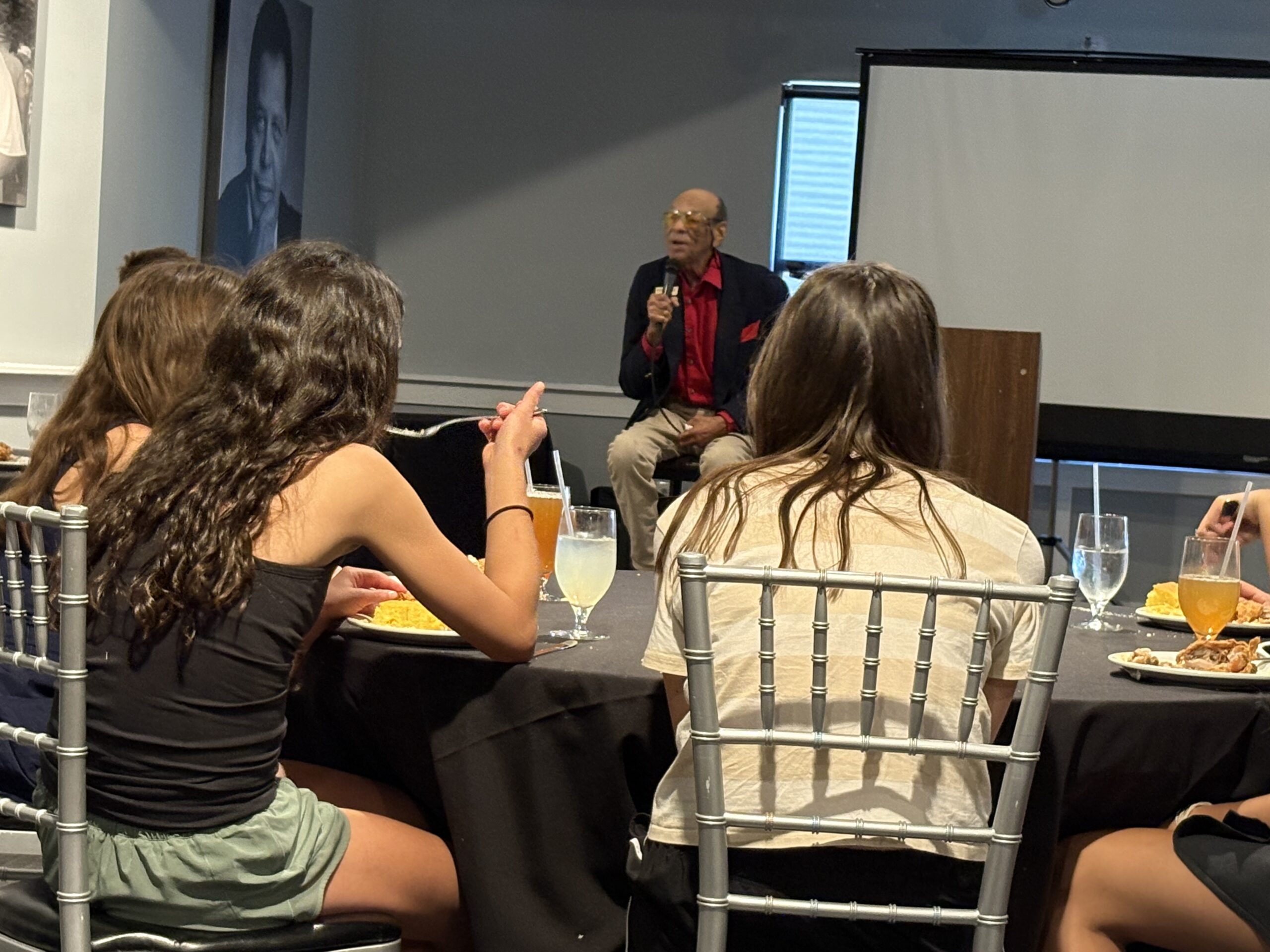
Students then heard a presentation from Eby Marshall Slack, a historian and original staffer at Paschal’s.
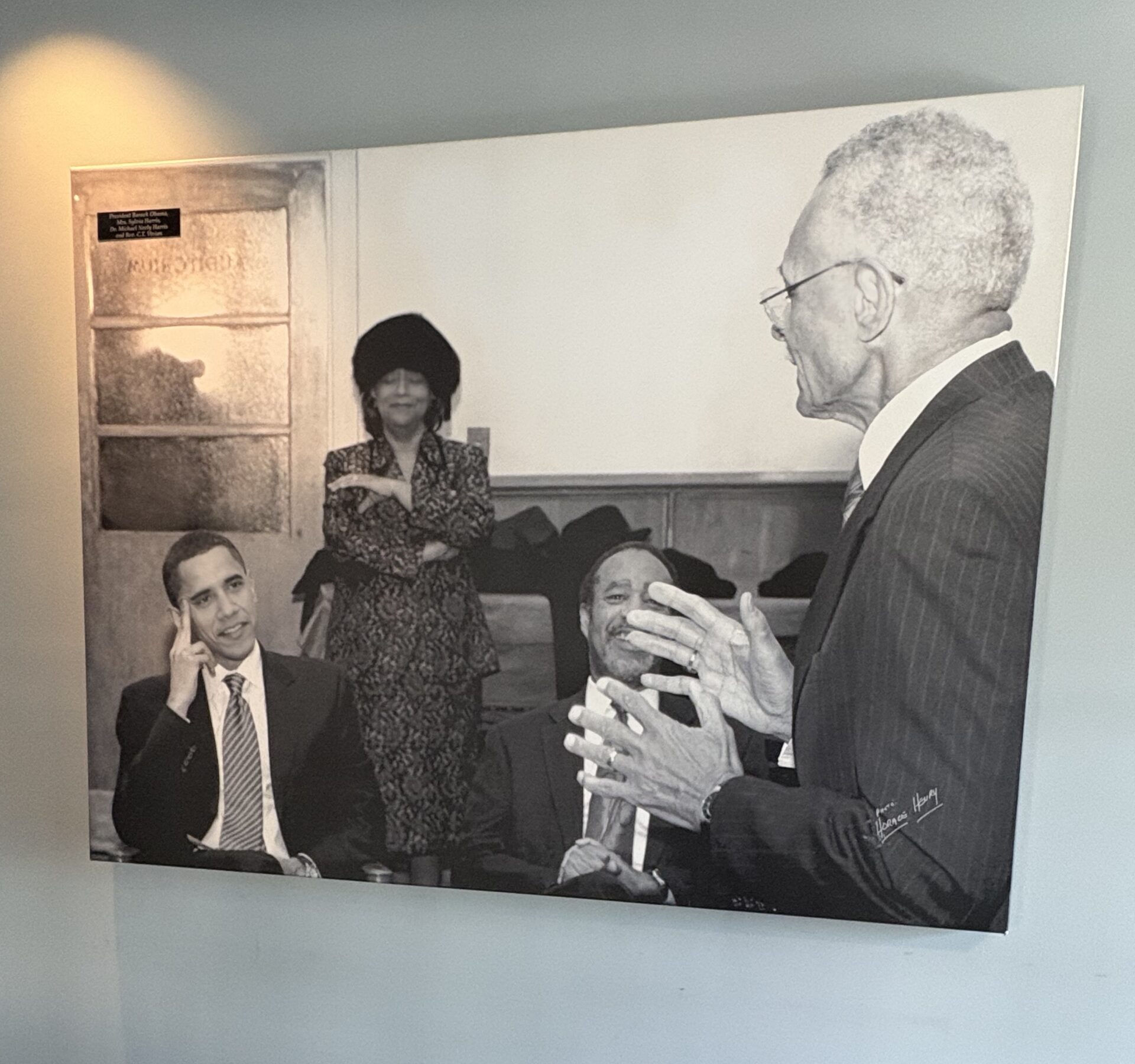
Eby talked to us about the history of the restaurant. He has known the Paschal brothers, the founders of the restaurant, since he was a child dating back to 1947 and held many roles including nightclub manager and head of banquets and affairs. He talked about how the Pascal brothers would often sit with preachers and politicians and discuss the civil rights movement.
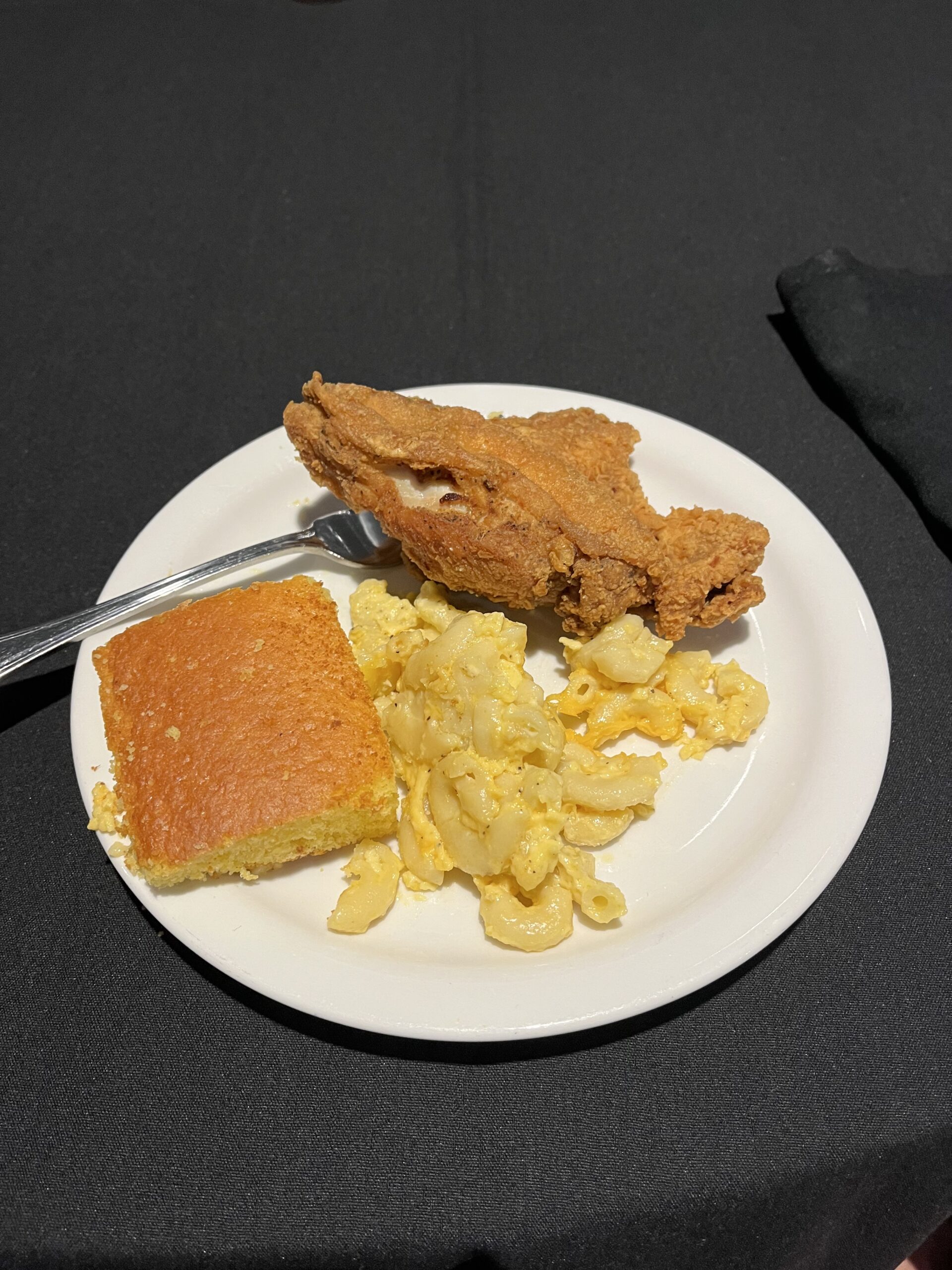
Eby shared about Dr. King’s frequent visits to Paschal’s and his love of the food. Dr. King’s family still visits often as does civil rights leader Ambassador Andrew Young.
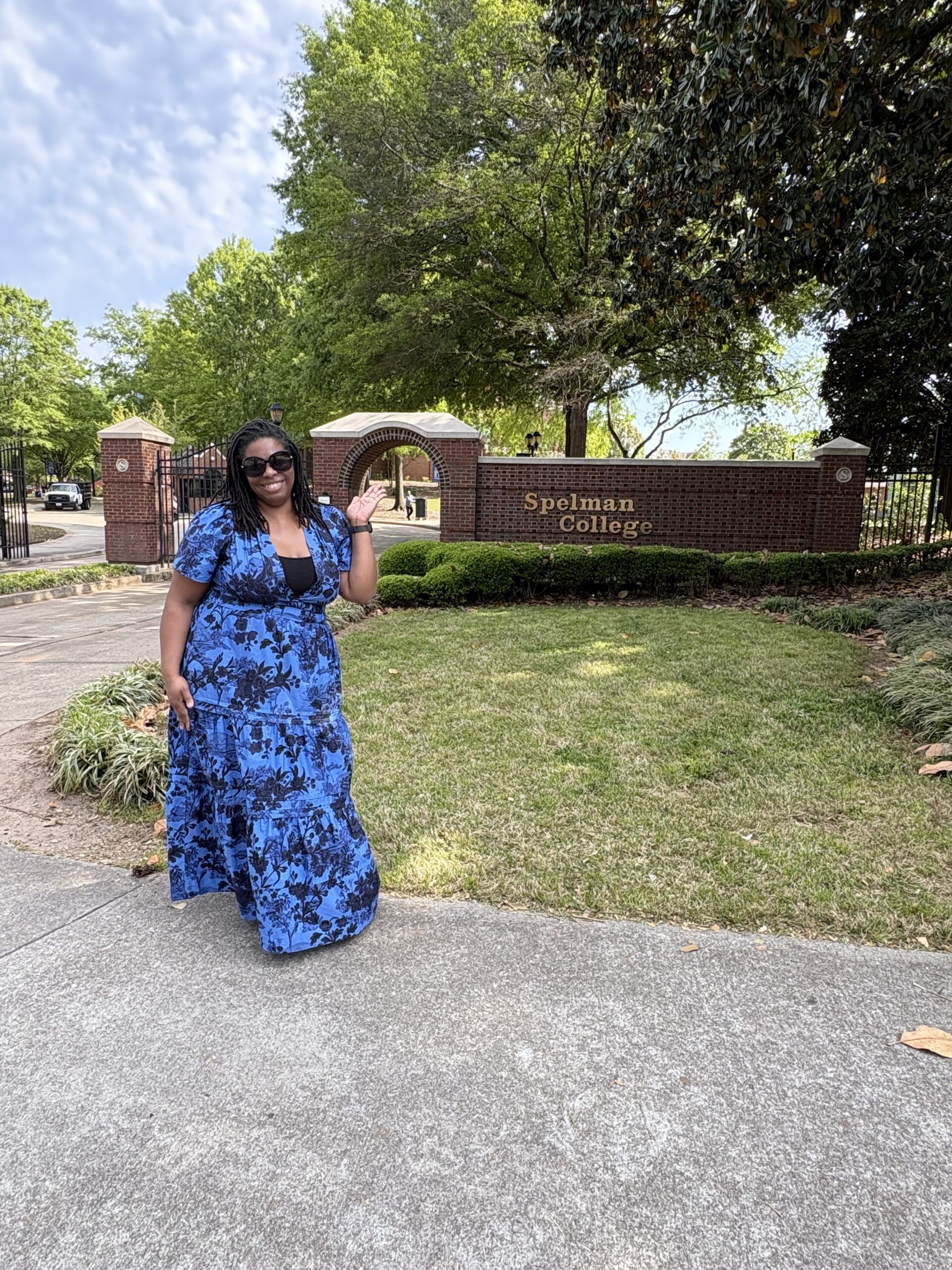
Our last stop was to Clark Atlanta University and Spelman College, part of the Atlanta University Center.
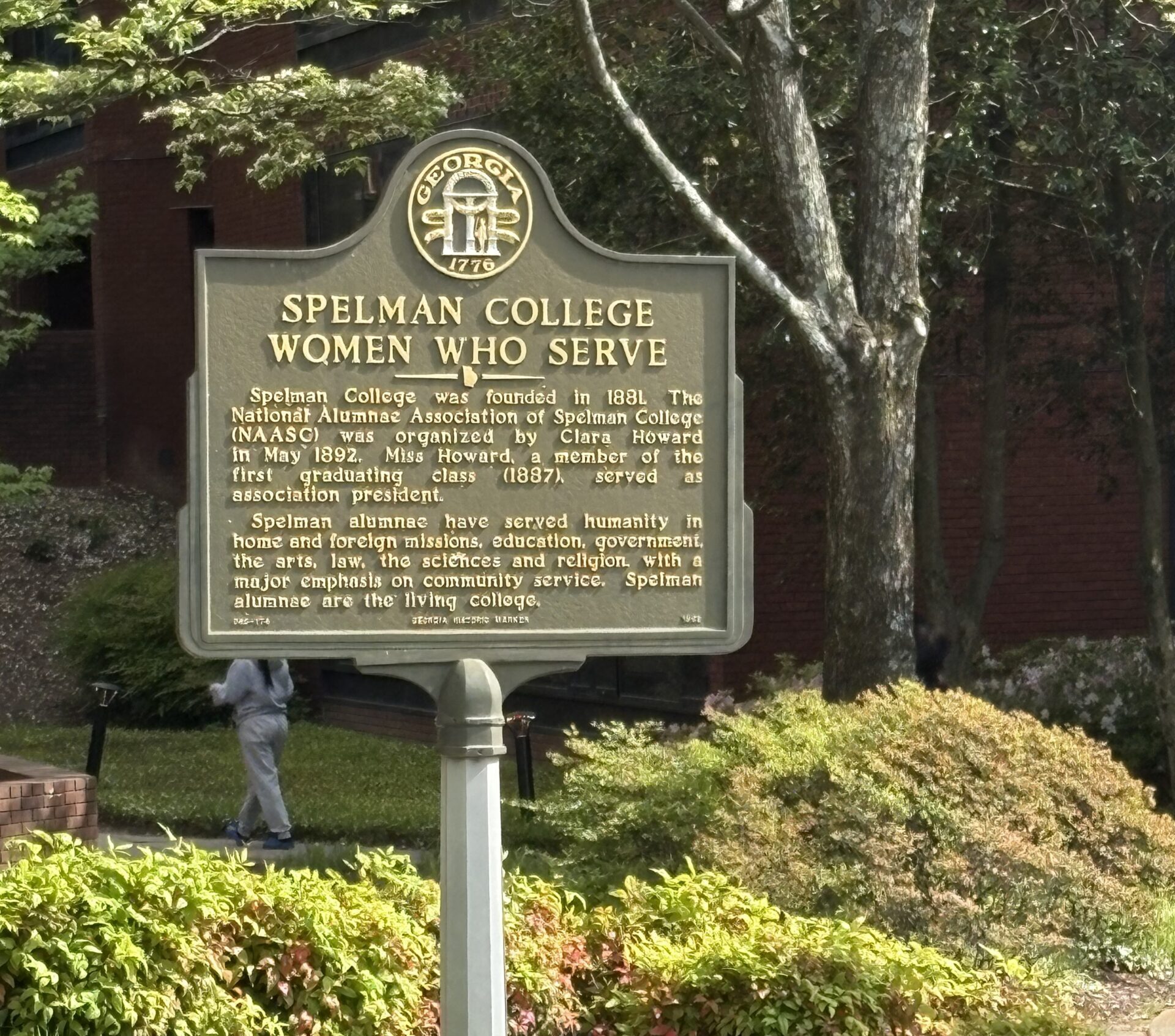
Sarah got us permission to walk through Spelman with the promise we wouldn’t walk on the grass because “Spelman women don’t cut corners.”
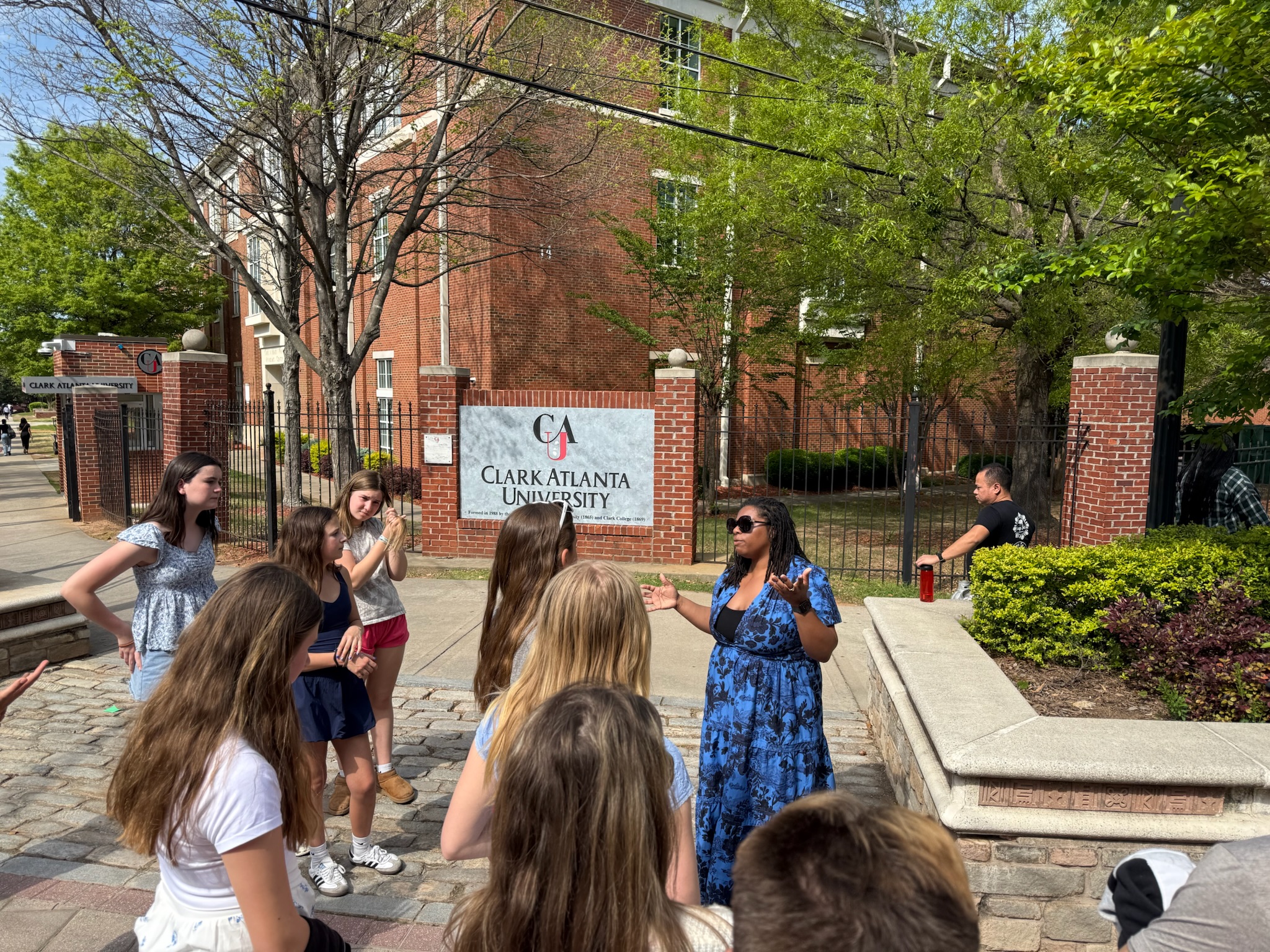
After our tour, we packed up and headed to the Hartsfield-Jackson Atlanta International Airport to get ready to head home. At the airport, we talked about our experiences from the day and reflected on the trip from beginning to end. JoAnne Bland’s question to us “What would you add to this world?” remains deeply on our mind.
We look forward to sharing our experiences with the CRS community.
